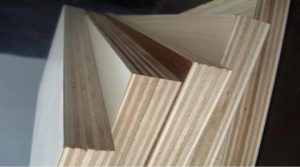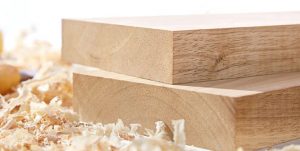This chapter is mainly to understand the plywood and its classification, familiar with the plywood production process to master the principles of plywood composition and physical and mechanical properties.
- 19mm plywood price and its classification
- The principle of marine plywood b&q composition
- The physical and mechanical properties of plywood
- The production process of plywood,Typical structure of plywood
Section I: Plywood and its classification
Plywood: is a sheet made of three or more layers of veneer arranged in different grain directions in odd combinations by means of adhesive gluing.
I. Common 2mm plywood.
(1) Class I (NQF) weather resistant. Boiling water resistant plywood
This type of board has durable, boiling or steam treatment and antibacterial properties, and can be used outdoors, it is made of phenolic resin glue or other adhesives with equivalent performance.
(2) Class II (NS) – quarter inch plywood
This type of plywood can be impregnated in cold water, can withstand short time hot water impregnation, and has antibacterial properties, but is not resistant to boiling water boiling. It is glued with urea-formaldehyde resin glue or other adhesives with similar properties.
(3) Class III (NC) – moisture-resistant plywood
This type of plywood boards can resist short-term cold water impregnation, suitable for indoor use under normal conditions. It is glued with low resin content of urea-formaldehyde resin glue, blood glue or other adhesives of comparable performance. Second, special plywood. Heterogeneous plywood,Bamboo plywood Section I: Plywood and its classification According to the structure, processing methods and uses can be divided into the following categories.
- Fine wood core board (joinery)
The use of narrow wood strips as the 6mm plywood 8×4 price, the combination of two veneers with mutually perpendicular grain on its top and bottom glued together.
Features: With the advantages of stable structure, simple process, cost and weight lower than that of plywood of equal thickness bunnings ply, it is widely used in construction, furniture manufacturing and other industrial sectors. - Hollow Core Board
It is made of hollow core lattice wood frame or paper honeycomb frame, foamed resin white oak plywood, etc. as core board, and two sheets of veneer or plywood with perpendicular grain are glued on the top and bottom of it.
Features: stable structure, small density, material saving, good sound and heat insulation, etc. - Decorative plywood
For various decorative purposes, the surface of commercial plywood is decorated by pasting thinly sliced wood, melamine decorative plywood board, impregnated paper and metal plate. It can also be made into decorative panels by painting after pasting paper, and can also be decorated by mechanical processing and perforation to achieve certain decorative effects. - Plasticized plywood
Each layer of veneer is rona plywood coated with phenolic resin glue and hot pressed under high pressure (2.0-3.5MPa).
Features: Cured resin layer is formed on its surface to prevent water penetration, and it has high strength. - Wood laminated plastic bc plywood
It is made of veneer impregnated with phenolic resin and pressed under high temperature and pressure. This product is mostly multi-layer thick board, also known as laminated board.
Features: High electrical insulation performance, water resistance and mechanical strength. - Shaped plywood
According to the requirements of the product, the slab is directly glued in the curved shape mold to make the curved shape plywood. - Fire-resistant plywood (fire-resistant 6mm ply. Flame-retardant plywood)
Plywood with fireproof performance treated with phosphoric acid amine, sulfate amine and other chemicals with fireproof performance. - Anti-corrosion plywood
Plywood with anticorrosive properties treated with creosote, sodium pentachlorophenol and other anticorrosive agents. - Insect-proof plywood
Plywood with insect-proof performance treated with borax or boric acid, etc.
Three, the significance of the production of plywood - The natural walnut veneer plywood defects of the wood can be removed.
- Overcomes the anisotropy of the wood and improves the mechanical strength.
- Dimensional stability, non-warping and non-deformation.
- 12mm ply large width and easy construction.
- Improve the utilization rate of russian birch plywood.
Request a quote - Section 2: Principles of plywood composition
Wood has anisotropy, in order to eliminate the inherent disadvantages of wood. The following principles should be followed when combining veneer into plywood sheet cost.
I. Symmetry principle
The veneer on both sides of the symmetrical center plane should correspond to each other in terms of species, veneer thickness, number of layers, manufacturing method, fiber direction, and moisture content of the veneer.
Second, the principle of vertical and horizontal interlacing
As the cherry plywood to overcome the anisotropy of the wood, then, the layers of purebond plywood is composed of veneer preferably fiber direction into a certain angle, taking into account the requirements of the wood yield, then, the adjacent layers of plywood veneer fiber direction into 90 ° angle that is perpendicular to each other.
Third, the principle of odd number of layers because the structure of sharon plywood is the adjacent layers of fiber direction perpendicular to each other, and the layers of veneer symmetry, so the total number of layers of plywood must be odd, which can also ensure that the plywood in bending, the maximum shear stress falls on the core layer of veneer, otherwise it will fall on the glue layer.
Fourth, the principle of layer thickness
The same thickness of 10mm plywood, can be glued by the number of layers of thin veneer, but also with a smaller number of layers of thick veneer glued together.
Section III physical and mechanical properties of water proof ply
I. Physical properties
(A) Density:
The density of plywood panels can be approximated as the average of the densities of the veneers that make up the 4 by 8 plywood. However, because the veneer is coated with adhesive, and the veneer is compressed during hot pressing. Therefore, the density of 4 by 8 plywood is usually greater than the average density of the veneer of which it is composed. Considering the above, the density of plywood can be calculated by the following formula.
(1) Based on the density of each veneer that makes up the plywood, the average density (Ro) of all veneers corresponding to different thicknesses is found using the following formula.
Ro = (d1r1+d2r2+……+dnrn)/(d1+d2+……+dn)
d1,d2……dn The thickness of each veneer layer that constitutes the black plywood.
r1,r2……rn Density of each layer of veneer.
(2) Find out the sum of the thickness of the veneers forming the plywood when they are dry (DV) and the dry thickness of the plywood made (DP), and then calculate the density increase of the plywood (R1) using the following formula.
R1 = [R0 (DV – DP) + A (N-1)]/DP – B
Where: N – the number of layers that make up the 22mm plywood.
A – a constant based on the type of adhesive and the amount of glue applied.
B – a constant based on the difference in volume shrinkage of plywood and veneer.
(3) The calculated increase in density of plywood (R1) is added to the average density of veneer (R0) that constitutes plywood to find the cheap plywood near me.
When the manufacturing process is certain, the thinner the veneer, the more layers of plywood, the greater the density.
(B) Moisture absorption and water absorption
The moisture absorption and water absorption of marine plywood bunnings is less than that of wood.
Moisture absorption rate – affected by external conditions. The same thickness of the board, the fewer the number of layers, the lower the moisture absorption rate. Different adhesives are also the main factors affecting the rate of moisture absorption.
(C) Dry shrinkage and wet swelling
The dry shrinkage and wet expansion of marine plywood home depot is lower than that of wood.
• The physical and mechanical properties of 18mm marine ply
Thermal properties
(A)Specific heat, thermal expansion
The specific heat of wood is greater than that of metal, and the specific heat of plywood can be referred to wood. Thermal expansion is greater in the fiber direction than in the vertical direction.
(B) Thermal conductivity
The thermal conductivity of wood is poor, but the higher the density, the stronger the thermal conductivity; the higher the moisture content, the stronger the thermal conductivity.
III Mechanical properties - Broad-leaved wood is higher than coniferous wood; 2. The same thickness of plywood, the more layers, the higher the mechanical strength; 3. The higher the strength of adhesive, the higher the mechanical strength; 4. The strength of dipping glue is higher than that of gluing; 5. Temperature, pressure, hot pressing time and moisture content of veneer all have influence on the strength.
(A) Gluing strength
Class I plywood: boiling water for 4h, drying at 63±3° for 20h, then boiling for 4h, and cooling at room temperature for 10min after removal.
Class II fire retardant plywood: soaked in hot water at 63±3° for 3h, taken out and cooled at room temperature for 10min.
Class III beech plywood: Soak in 30±3° water for 3h, then dry in 63±3° oven for 1h, take out and leave at room temperature for 10min.
S=P/(A×B) S – bonding strength (Mpa)
P – breaking load (N)
A–actual width of specimen section (㎜)
B – actual length of specimen section (㎜)
Section III Physical and mechanical properties of plywood
(II) The strength-to-weight ratio of mahogany plywood
K=(σ11 + σⅠ)/ r
Where: K – strength-to-weight ratio.
r – density.
σ11 — Compressive strength of the smooth grain
σⅠ – cross-grain tensile strength - Request a quote


